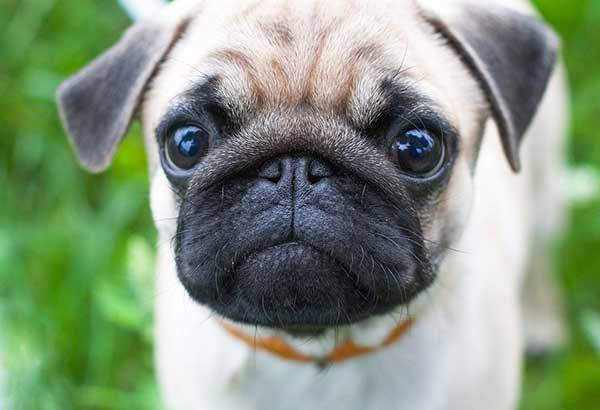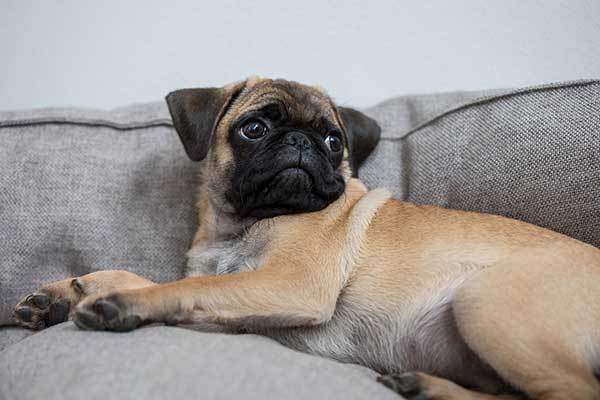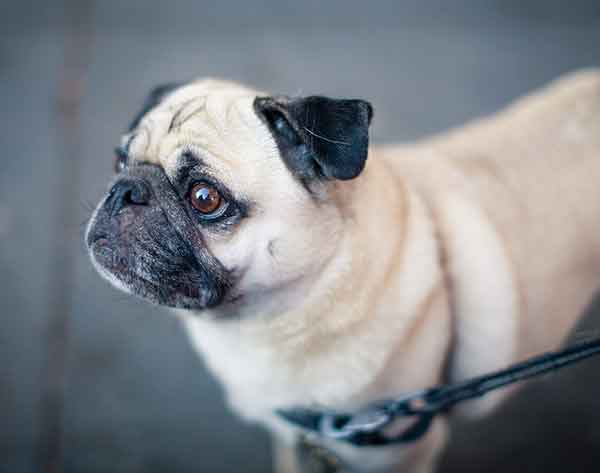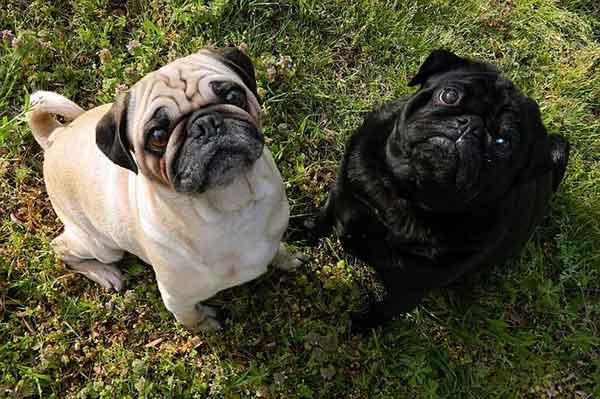Pugs are some of the most charming and affectionate dogs out there. Well, they can also be naughty and mischievous at times.
Like many other dog breeds, pugs have a history that dates back hundreds of years ago.
If you’re planning to acquire a pug, it’s important to familiarize yourself with their history and what they were originally bred for. That way, you’ll be able to understand some of their inherent traits, including their physical and emotional characteristics, as well as their susceptibility to canine diseases.
But what were pugs originally bred for?
Simply put, pugs were bred as companion dogs, particularly to offer companionship to ancient Chinese royalties. But as years went by, pugs acquired more utility. Nowadays, you can find these dogs in many homes where companionship isn’t necessarily their primary role.
Read on as we expound further on what pugs were originally bred for and the reasons behind their popularity today.
More About Pugs
Before we delve deeper into the origin of pugs and what they were originally bred for, let’s begin easy by understanding the basic physical attributes about this dog breed.
Pugs go by numerous nicknames, including Chinese pug and Dutch mastiff. Generally, a pug is a dog breed that’s characterized by its wrinkly and short-muzzled face, as well as curly tail.
1. Size, height, and coat color
Pugs have a fine and glossy coat which is available in different colors. Fawn is the most popular pug coat. However, the American Kennel Club has since recognized other coat colors, including black. The Canadian Kennel Club recognizes even more pug coat colors, such as fawn, black, silver, and apricot.

In terms of their general physical appearance, pugs sport a compact square body and have well-developed muscles. Based on that description, you may be forgiven for thinking that pugs are large, intimidating dogs. Far from it. Instead, pugs are relatively small dogs that belong to the toy group. They earned their place in the toy group of dogs, thanks to their relatively short size and weight.
An average adult pug weighs between six and eight kilograms (14 to 18 pounds) and stands up 10 to 11 inches tall.
They’re also the sturdiest members of the toy group, due to their relatively short but straight legs that are set well under their bodies.
ALSO READ: Are White Pugs Really All That Special?
2. Eye appearance
Pugs have large round eyes which are often dark in color. The skin folds around their eyes are also dark, further accentuating their dark eyes.
3. Ear appearance
Pug ears come in two distinctive shapes, namely rose and button. Button ears are considered the standard size and style for all pugs.
Rose ears are smaller than their button counterparts and usually appear folded, with the front edge resting against the side of the dog’s head.
4. Teeth appearance
Pugs have lower teeth that protrude further than their upper ones, causing an under-bite.
5. Tail appearance
Pug tails are normally curled tightly over the dog’s hip. The tails also feature a black line that stretches from the dogs’ occiput.
- ACTIONABLE HEALTH INSIGHTS: Test for over 270 genetic health conditions and get actionable insights to help you give your pup the best care possible….
- MOST ACCURATE BREED IDENTIFICATION: Test for over 350 dog breeds including dingoes, coyotes, wolves, and village dogs. Using a research-grade…
- TRAIT INSIGHTS THAT HELP YOU BE MORE PREPARED: Test for 55 physical traits. Size, coat, grooming needs — your dog’s traits don’t just make them…
Last update on 2025-01-13 / Affiliate links / Images from Amazon Product Advertising API
Where Did Pugs Originate From?
As we’ve already highlighted, the origin of pugs can be traced back to China hundreds of years ago. However, it’s a bit unclear as to when the first pug appeared in the country or the Far East in general.
According to some researchers, the first pug appeared in ancient China during the Han Dynasty which dates back to 200 BC.
Other historians place the origin of pugs in China far back to 1046 BC, around the Zhou Dynasty. There’s also a group of researchers and historians which believes that the first pug may have appeared among the Chinese people in 17th century BC, during the Shang Dynasty.
Perhaps the most useful clue that might help to explain the origin of pugs is found in a book by Confucius, known as The Wisdom of Confucius. In this book, Confucius refers to a short-mouthed dog that resembles the modern pug in both physical and emotional attributes.

What Were Pugs Originally Bred For?
1. As royal companions
According to the American Dog Kennel Club (AKC), pugs are currently ranked the 28th most popular dog breed.
But unlike today when you can find a pug in every other home, the original pug was more of an elitist and royalty dog. Not only were pugs developed as companion dogs, but they were specifically intended to offer companionship to aristocrats.
Ancient emperors spent a significant part of their waking hours sitting in their imperial palaces and marveling at the trappings of power.
Along with that came some boredom and loneliness. Therefore, these ancient rulers wanted a dog that could help to kill the boredom associated with the nature of their jobs.

But why couldn’t they choose any other dog breed?
Now, ancient emperors may have spent long hours sitting in their palaces. However, they were reasonably busy people too.
A typical day in the palace involved activities like entertaining guests and working out ways to extend their dominance into foreign territories. As such, it was necessary to adopt a dog breed that required minimal exercise, and a pug aptly fit that description.
As royal companions, pugs were also preferred due to their calm and mellow disposition. Since pugs were less anxious and curious, it was easier to have them around even during situations that required maximum solemnity and concentration.
Their calm and relaxed demeanor meant that pugs could also act as foot warmers. It’s important to note that the ancient Chinese castles were rather cold. And since pugs would just sit for hours on end, they made perfect foot warmers.
Many modern-day pug owners have always associated the dog’s tendency to sit around and keep calm for long hours with laziness. However, those traits are part of pugs’ temperament, and one of the primary reasons this dog breed was developed.
Another theory suggesting why pugs were valued in ancient royal China has everything to do with the W-shaped figure on their foreheads. It’s easy to dismiss this as nothing but their trademark feature. However, the shape resembles the Chinese letters for ‘prince.’

2. As gifts for foreign rulers
Pugs were considered sacred dogs, meaning that they could only be owned by the royal family. Ancient pugs were never sold. In fact, there are bits of evidence suggesting that illegal breeding of pugs was outlawed.
Edward Patterson, through his book The Pug, claims that pugs were considered prized possessions. Therefore, they could not be offered to commoners, which explains why they mostly changed hands among the nobility.
There are records of China having gifted pugs to several Japanese rulers. Russia’s first ambassador to China was also gifted a pug. And when these dogs were not being gifted to rulers, they were offered as a peace offering. That only goes to show how the ancient Chinese valued them.
Were all pugs in ancient China equal?
Not exactly. Every emperor wanted to identify with the ‘W’ shape on these dogs’ forehead for the obvious reasons that we’ve already mentioned. However, each ruler had their own tastes and preferences too. So, some wanted their pugs to have certain distinctive features.
According to the AKC, some emperors were fond of flat-faced dog breeds. As such, they influenced breeders to develop pugs with those specific features.

When Did Pugs Travel From China To Other Regions Of The World?
Pugs remained in China for 2000 years, and then they began to spread beyond the country’s borders.
Countries in the Far East were the first to adopt pugs before the dog breed became popular in other regions around the world. In Tibet, pugs were kept by Buddhist monks as pets in their monasteries.
Between the 16th and 17th centuries, pugs became popular in European courts. In 1572, pugs were declared the official dog of the House of Orange. This came about after a pug known as Pompey alerted the Prince of Orange to approaching assassins, thereby saving his life.
According to reports, a pug also traveled along with William III and Mary II from the Netherlands to England in 1688. It’s believed that most pugs around this time were bred with the old-type King Charles spaniel, which explains why the modern King Charles Spaniel has some pug-like features.
After gaining widespread recognition as royalty dogs in England, pugs began to spread to other parts of Europe. Some of the earliest pieces of evidence pointing to the existence of pugs in Europe can be found in paintings in Spain and Italy.
The paintings portray pugs riding up front on private carriages, donning jackets and pantaloons that resemble those of their coachmen.
According to these paintings, it’s evident that pugs had acquired additional utilities other than their original purpose of royal companionships. They could be used to track lost animals or people in distress during search and rescue missions. Some pugs also served as guard dogs.

In the 18th century, pugs had now become one of the common dog breeds in Europe. The dog was no longer a preserve of the nobility, as other influential people in society took up the mantle of popularizing the breed.
For instance, an English painter known as William Hogarth is associated with one of the most popular pugs in history, known as Trump. One of Hogarth’s 1745 self-portraits which includes Trump is on exhibitions at the Tate Gallery in London.
Joséphine Bonaparte is also believed to have owned a pug before getting married to Napoleon Bonaparte. While in confinement at Les Carmes prison, it’s reported that Joséphine was denied all visiting rights, except for her pug. She reportedly used the dog to convey concealed messages back to her family.
But while pugs were increasingly becoming popular in England and Europe, they were also losing some of their distinctive features due to uncontrolled breeding. Therefore, their popularity began to decline.
Fortunately, in 1860, there was a new wave of importation of pugs from China. Many of these pugs were the original breeds, characterized by their wrinkled face and short legs. Pugs regained their popularity and the breed was once again in demand.
A few years following the new wave of importation of pugs from China, the dog regained its position among the aristocrats. This time around, Queen Victoria did a great job of popularizing the breed. The Queen bred numerous pugs, including Olga, Minka, Pedro, Venus, and Fatima.
In addition to Queen Victoria, other members of the English Royal Family who developed an affinity for pugs include the Queen’s grandson King George V, as well as his son King Edward VIII.
The United States and the Americas in general was among the last regions to get introduced to pugs. The American Kennel Club formally recognized the pug breed in 1885. It didn’t take long before the breed established itself in the United States. In 1931, the Pug Dog Club of America was established.
- FORMULATED FOR PUREBRED PUGS: Royal Canin Pug Adult Dry Dog Food is designed to meet the nutritional needs of purebred Pugs 10 months and older
- SPECIALIZED KIBBLE: Unique kibble design helps small dogs easily pick up and chew their food
- SKIN SUPPORT: Reinforces the skin barrier with essential nutrients to support healthy skin and coat
Last update on 2024-12-19 / Affiliate links / Images from Amazon Product Advertising API
What Are The Purposes Of Pugs Today?
So, we’ve already highlighted the purpose for which pugs were originally developed. Now, you may be wondering, what are pugs bred for nowadays?
While pugs may have acquired additional purposes throughout the years they’ve been around, they’re still primarily used as companion dogs.
Only that today, they’re not necessarily a preserve of kings and emperors. The ability of pugs to offer companionship is due to their docile and affectionate nature.
As a companion dog, a pug can help to reduce stress, anxiety, boredom, and loneliness. And although they’re not hyperactive dogs, pugs are still reasonably playful. Their playful nature allows them to encourage activity among their owners.

In addition to companionship, the modern-day pug serves various other functions, including;
1. Therapy dog
As a therapy dog, pugs can offer their owners emotional support and help them overcome emotional turmoil like grief. Their small and adorable faces makes it easier for their owners to bond with them.
2. Movies and commercials
Like many other dog breeds, pugs have also found their way into the big screen. Pugs have been featured in numerous movies, television shows, and ads. The Men in Black series, The Nut Job series, and Patrick are some of the movies that have been graced by pugs.
Various Hollywood celebrities like Jessica Alba and Billy Joel have also fallen in love with these dogs, further increasing the breed’s popularity.
Other people own pugs for the same reason they would own other dog breeds, including for show, exercise, or as a guard dog.
ALSO READ: How Much Do Pugs Cost (The Highs And Lows Of Budgeting For Pugs)
Conclusion
Pugs were originally bred for companionship, a role they aptly fit and have played to date. However, the dogs have since acquired numerous other functions. Depending on the owner, pugs can now act as therapy dogs, show dogs, and even companion dogs.




